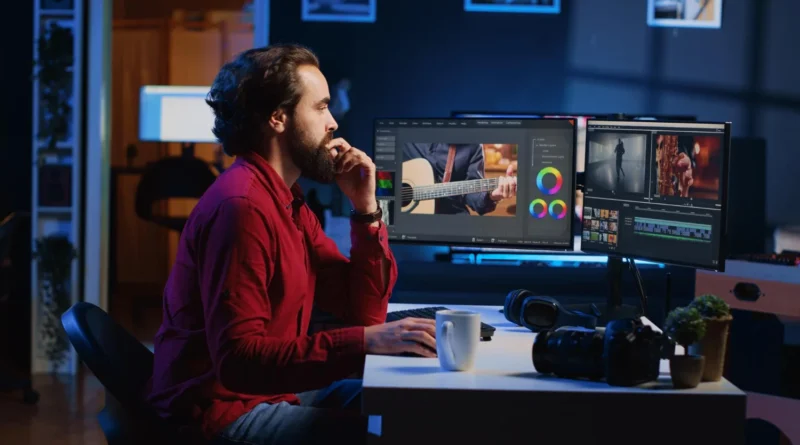Mastering SFM Compile: A Complete Guide for Beginners
Source Filmmaker (SFM) is an incredibly powerful tool for animators and creators. It allows users to bring characters to life using the Source engine. However, one of the most misunderstood aspects of the software remains the SFM compile process. If you’ve ever created an amazing animation but struggled to export it cleanly, you’re not alone.
This guide will help you master the sfm compile process. From basic rendering to solving common errors, you’ll get everything you need to start compiling like a pro.
What Does “SFM Compile” Mean?
In Source Filmmaker, compiling refers to the final rendering and export of your animation or scene. Unlike saving a project file, compiling turns your scene into a playable video format. You may also compile models and maps, depending on your goals.
So, whenever you hear someone mention sfm compile, they are referring to converting raw project data into usable output like AVI or MP4 files. This stage is essential for sharing content on YouTube, Discord, or other platforms.
Why the SFM Compile Process Matters
Rendering is not just a final step; it’s a crucial component of the entire animation workflow. If your compile process is poorly handled, your final video may appear low-quality or even unusable. Errors, glitches, or rendering bugs can ruin the best scenes.
Additionally, knowing how to optimize during compiling saves time and computing resources. You want a smooth, clear final product—without waiting hours unnecessarily.
Understanding the Compile Settings in SFM
Before starting, open the “Export Movie” window under File > Export > Movie. Here, you’ll find several essential settings:
1. Image Format
You can choose between formats like AVI, TGA, and MP4 (with third-party tools). For beginners, AVI is often the most straightforward choice.
2. Resolution and Frame Rate
Always match your resolution to the platform you’re targeting. For YouTube, 1080p at 30 or 60 FPS works well. Ensure the frame rate matches your project settings.
3. Sampling Quality
This determines the visual quality of your compile. Higher settings look better but take longer to render.
Choosing the right compile settings allows for maximum efficiency while preserving video quality.
How to SFM Compile Your Animation Step-by-Step
Step 1: Finalize Your Timeline
Make sure your animation is complete. Double-check all lighting, camera movements, and sound effects.
Step 2: Open the Export Movie Window
Navigate to File > Export > Movie. Choose your output folder and file name.
Step 3: Choose the Format and Resolution
As mentioned earlier, select a format that suits your platform. Set the appropriate resolution and FPS.
Step 4: Adjust Sampling Settings
Under “Antialiasing Samples,” set the level to at least 8 or higher. This ensures smooth edges and better visual clarity.
Step 5: Render the Movie
Click “Export Movie.” The program will compile each frame into a video. This may take some time depending on length and quality settings.
Tips to Improve SFM Compile Results
Improving the sfm compile process requires a few smart habits. Below are tips that can save you time and headaches.
1. Close Background Programs
Rendering consumes a lot of system resources. Shut down unnecessary programs to speed things up.
2. Use Depth of Field and Lighting Carefully
Proper lighting enhances scene quality without increasing file size too much. Avoid overusing depth of field effects, as they prolong rendering times.
3. Preview with Playblast
Before finalizing your compile, use Playblast (a quick preview render) to identify mistakes early.
4. Organize File Paths
Keep file names simple and store everything in easy-to-locate folders. Avoid spaces or special characters that can cause compile errors.
Common SFM Compile Errors and Fixes
Even experienced users encounter issues during the compile stage. Here are the most frequent errors and how to solve them.
“AVI File Could Not Be Written”
This error usually means the file path is incorrect or lacks permission. Always run SFM as an administrator and save to folders like Desktop or Documents.
“Blank Output Video”
If your compile finishes but the video shows nothing, check your camera track and ensure it’s active. Also, verify that the animation set isn’t hidden.
“Audio Not Syncing”
Desynced audio is often due to mismatched frame rates. Always use 30 or 60 FPS consistently across both audio and video tracks.
Advanced Compile Techniques for Professionals
Once you’ve mastered the basics, you may want to explore advanced techniques.
1. Frame-by-Frame Image Sequence Export
Instead of compiling directly to AVI, export your animation as a sequence of images (e.g., TGA files). Later, use software like Adobe Premiere or Blender to compile the frames into a video. This method gives better quality and more control.
2. Using Third-Party Render Engines
While SFM’s internal engine works well, tools like Source Filmmaker Enhanced (SFM-E) provide access to advanced render features, including ray tracing and real-time shadows.
3. Batch Rendering
For large projects, batch rendering multiple scenes overnight can save time. Automate your tasks with scripts or SFM tools that support batching.
Alternatives to Traditional SFM Compile
SFM hasn’t received major updates in recent years, so some users explore alternatives like Blender or Source 2 Filmmaker. However, many still prefer SFM for its speed and intuitive layout.
That said, combining SFM with third-party tools expands creative options. For example, you could animate in SFM and compile using Adobe After Effects or HitFilm.
Final Thoughts: Master Your SFM Compile Workflow
Compiling in SFM might seem intimidating, but it becomes second nature with practice. By understanding the settings, troubleshooting errors, and applying optimization tips, you’ll consistently produce high-quality animations.
Always preview your projects, manage system resources wisely, and explore advanced methods when you’re ready. Whether you’re creating a simple meme or a full cinematic short, mastering the sfm compile process will elevate your work.
Now that you know how to compile in SFM, why not start your next animation today?

